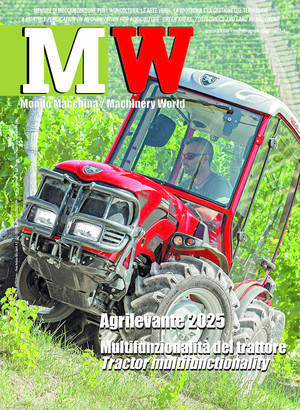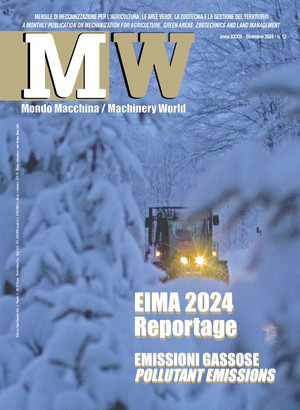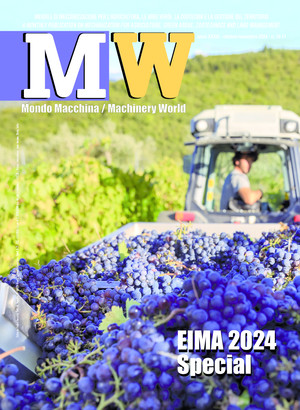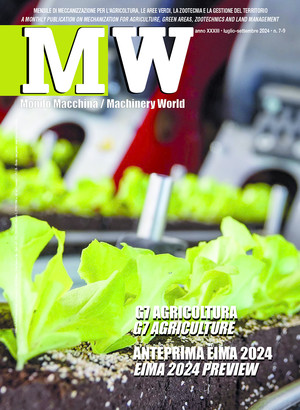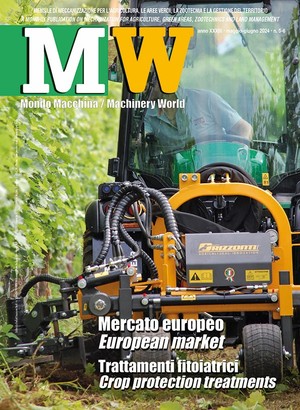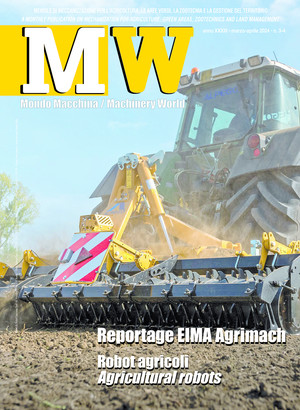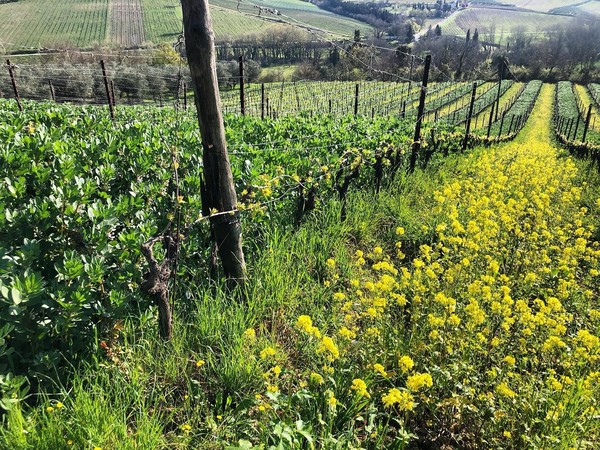
From conservative to regenerative agriculture: equipment for green manure
This practice has been well-known for some time, and it has been relaunched to improve the physical and chemical conditions of agricultural land in light of modern mechanization
Conservation agriculture is based on three fundamental principles: abandoning plowing in favor of minimum tillage or no tillage, permanently covering the soil with crop residues or cover crops, and restoring a rational crop rotation. These practices improve soil structure, increase biodiversity and enhance water retention capacity while reducing dependence on chemical inputs. Ultimately, this contributes to mitigating the effects of climate change and increasing the resilience of agricultural systems. Ultimately, this contributes to mitigating the effects of climate change and increasing the resilience of farming systems. Regenerative agriculture, unlike conservative agriculture, is not limited to reducing environmental impact but rather aims to improve the chemical, physical and biological functionality of the soil. Other cornerstones that are pursued are increasing the organic matter content (achieved with compost, green manure, and bio-amendments), increasing biodiversity (polyculture, agroforestry) and stimulating the soil microbiota through biofertilizers. An integrated management approach also includes rational grazing and the combination of crops and livestock, favoring the recycling of nutrients. All these approaches are also aimed at efficient carbon sequestration in order to improve resilience to climatic stress.
Green manure: specific techniques and crops. This technique consists of growing selected plant species and then plowing them back into the soil to enrich it with organic matter and nitrogen, improving its fertility and physical and chemical structure. At the same time, it increases water retention, combats erosion and soil compaction, and favors microbiological biodiversity. Many plants can be used as green manure, and they have different and complementary purposes: legumes (vetch, clover) fix nitrogen, grasses (rye, oats) protect the soil, while cruciferous plants (horseradish, mustard) are effective for biofumigation.
Green manure mechanization. Usually, equipment is used for the primary and secondary preparation of the soil, sowing, fertilizing (if necessary), mowing and burying. Green manure is often used in the inter-rows of tree crops, such as vineyards and orchards; for the preparation of the seedbed, rotary harrows or tillers are usually used, which are able to sufficiently break up the surface layer of the soil, often combined with rolling, to even out the surface and further reduce clodding. This is followed by sowing the seed mix according to the identified agronomic needs, at the same time increasing the organic substance with suitable organic fertilizers, if necessary. The most suitable seeders are pneumatic ones, for even distribution even on uneven ground, or models that work by broadcasting, ideal for large areas. Seed drills are often coupled with rollers at the rear to slightly compact the surface layer to make the soil adhere to the seeds, facilitating their imbibition and thus favoring germination.
At the most appropriate time, from an agronomic point of view, the crop destined to become green manure is chopped up with a lawnmower equipped with knives blades or hammers blades (or flails) as working parts. Using hammers blades to chop up the material is undoubtedly more effective, thus facilitating both burial and subsequent decomposition.
Lateral-shifting grass cutters are useful for this purpose in rows of vineyards or orchards and also for working on the banks of canals and ditches for complete cutting, even under the rows. As an alternative, disc grass cutters are also available for this last requirement. They are, in fact, the most effective solution for managing grass near tree trunks or stumps. To avoid damaging the plants, a spring-loaded bar activates the movement of the disc, which is retracted by a hydraulic cylinder.
Burying. The plant material can be buried with a disc harrow (discs are best) and plows or spaders. On a sturdy supporting frame, the disc harrow has one or more rows of convex discs, inclined with respect to the vertical axis, with a smooth or toothed edge, which loosens the soil and incorporates plant residues along the entire horizon. This equipment is particularly suitable for compact soils that are difficult to work. Thanks to its typical working method, the plow, on the other hand, buries green manure deeply; single or double mouldboard models are suitable for working in compacted soil and/or between the rows of specialized crops. On the other hand, disc plows are ideal for loose or stony ground, as they limit compaction. However, it should be kept in mind that although the plow ensures particularly effective burial of the green manure, its action can alter the soil structure and reduce microbial biodiversity.
Spading machines, on the other hand, loosen the soil without inverting the layers and without creating a plough pan. They roughly break up and mix the worked layer, creating good aeration that favours the decomposition of the plant biomass. This is a particularly suitable option in regenerative agriculture, where the optimal physical and chemical condition of the agricultural soil must be preserved while reducing erosion.
Crops for green manure
Crops suitable for green manure have some common characteristics. They must be fast-growing to allow for cutting and planting in the right time frame, highly productive in biomass to guarantee an adequate supply of organic substance, competitive with weeds and resistant to drought.
The botanical families most suitable for green manure include:
Fabaceae: lupin, clover, sainfoin, vetch, fava bean and protein pea
Brassicaceae: horseradish, mustard and rapeseed
Graminaceae: rye, oats and barley
Boraginaceae: phacelia.
These species are not intended for consumption but to act as a natural fertilizer once they have been broken down by the action of microorganisms in the soil. Legumes are particularly useful because, thanks to their symbiotic relationship with mycorrhizae, they are able to fix atmospheric nitrogen, transforming it into forms that plants can assimilate. The effect on the soil varies according to the period of burial: if carried out during flowering, it determines a rapid release of nitrogen; if postponed until the formation of pods, it favors a more gradual release over time. The choice of the most suitable species must also take into account the characteristics of the soil. For example, the common vetch (Vicia sativa) adapts to different types of soil but is sensitive to water stagnation and low temperatures.
Brassicaceae, thanks to their taproots, contribute to improving the soil structure, limiting water stagnation and favoring water drainage. Burying mustard (Brassica nigra, Sinapis alba, Brassica juncea) provides a considerable quantity of organic substance, mobilizes phosphorus and potassium and has biocidal properties.
Gramineae, on the other hand, favor the maintenance of fertility by recovering nutrients from the deeper layers of the soil. After shredding and plowing, these nutrients are more readily available in the top 20 cm of soil. However, in order to avoid an excessively high carbon/nitrogen ratio - characteristic of grasses - it is advisable to plow before flowering.
In general, green manure crops are used to improve soil fertility, control weeds and, in some cases, act as a biofumigant. The choice between using single-species or multispecies mixtures depends on the agronomic targets and the needs of the soil. The use of single species simplifies crop management and involves lower costs, while the use of multispecies seeds offers greater competitiveness against weeds, better root system development, and an increase in biodiversity. Depending on the species selected and the farm's needs, suitable cultivation practices for sowing will be necessary to optimize yield. The sowing period, depth and additional work will have to be adjusted according to the characteristics of the varieties used.
Rolling
On operating machines, rollers are components generally placed at the rear to slightly compress and level soft soil. They can also crush vegetation before burying it, especially if equipped with teeth or other suitable working parts. Therefore, they are particularly effective for green manure, as they accelerate the process of organic matter degradation without altering the soil structure. Generally speaking, there are many types of roller available: smooth, packer, spiral, cage, toothed, knife, etc. The last two are the most suitable for breaking down sturdy stems while also favoring burial.


